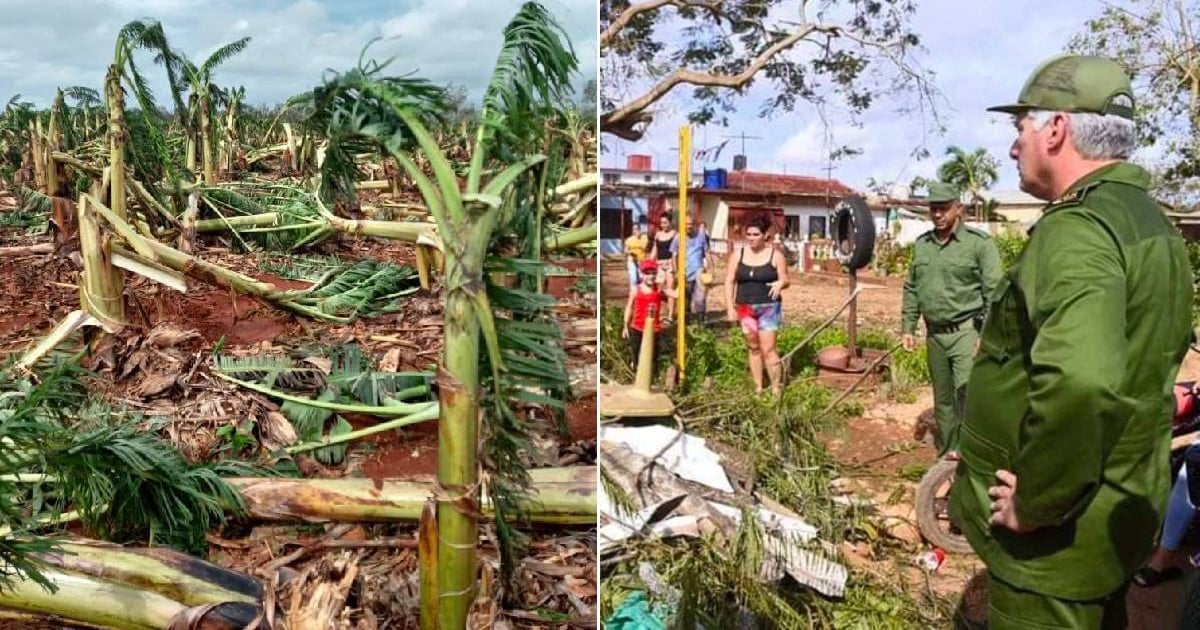
The passage of Hurricane Rafael caused severe damage to agriculture in the provinces of Artemisa and Mayabeque, two of the largest food producers in Cuba.
According to Engineer Yohan García Rodas, General Director of Agriculture at the Ministry of Agriculture, the weather event has significantly impacted the main crops in these regions, which supply a large portion of the food consumed in Havana, as reported by the official outlet Cubadebate.
The losses are particularly severe in Artemisa, where damage has been reported in 100% of the 9,000 hectares of bananas cultivated in the province, the official explained.
This crop, which is crucial for the population's food supply, has been severely impacted by the strong winds and heavy rains associated with the hurricane, he said. Images circulating on social media show the devastation in these plantations.
Moreover, the 3,800 hectares of cassava also suffered significant damage, although the losses in Mayabeque were relatively minor.
García Rodas emphasized that, prior to Rafael's arrival, the cold campaign in the region was progressing well, with over 9,500 hectares planted with various crops, including more than 14 hectares of bananas and 8,000 hectares of cassava.
However, after the hurricane passed, a large part of these productive lands were left in ruins, which will severely impact the food supply in the coming months on an island already heavily affected by hunger and difficult access to food.
Since Thursday, work teams have begun assessing the damage to crops, fruit trees, and greenhouses across the region. Among the most affected areas are Güira de Melena, San Antonio de los Baños, Alquízar, and Artemisa itself.
In particular, damage was reported to over 1,000 hectares of vegetables intended for supplying Havana at the end of the year. Although several greenhouses suffered damage to their metal structures, the roofs were mostly preserved, which facilitates their recovery, the publication details.
Despite these efforts, the situation remains critical. In particular, beans, which had begun to be planted in September, suffered losses of 700 hectares, representing a significant blow to production at the start of the cold season, it emphasizes.
Cuban authorities are redesigning the agricultural strategy and have announced that in the coming months they will prioritize short-cycle crops, which require less time to grow and can be seeded quickly. Additionally, the potato campaign, which is set to begin next week, remains a priority to ensure food supply in the early months of 2024.
This agricultural outlook adds to an already complex situation, which has been repeatedly pointed out by the Minister of Agriculture, Ydael Pérez Brito, who has warned about the severe food crisis facing the country, characterized by a decline in protein production, a shortage of inputs, and a fuel deficit for agricultural machinery.
Additionally, Cuban agriculture faces structural issues such as an aging rural population, a lack of workforce, and unpaid debts to producers, which further complicate the sector's recovery.
The crisis in Cuban agriculture, which had been facing issues even before the impact of Hurricane Rafael, appears to be one of the government's major concerns, as the lack of food continues to affect the population, especially regarding the production of animal proteins such as pork, eggs, and chicken.
Hurricane Rafael struck western Cuba on Wednesday as a Category 3 storm.
What do you think?
COMMENTFiled under: